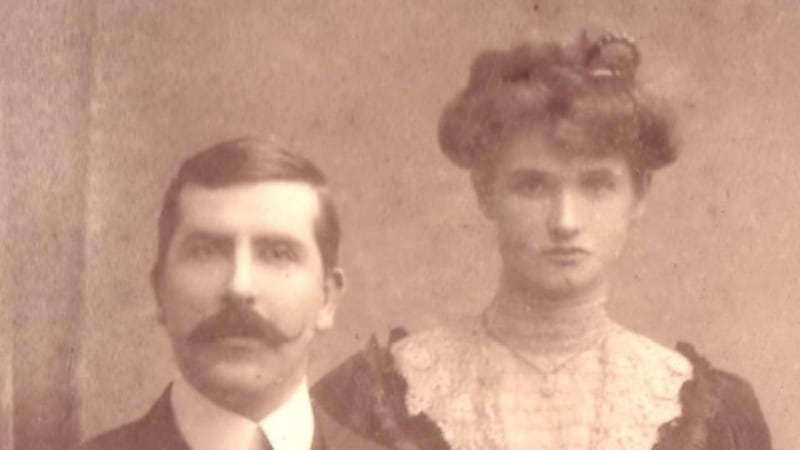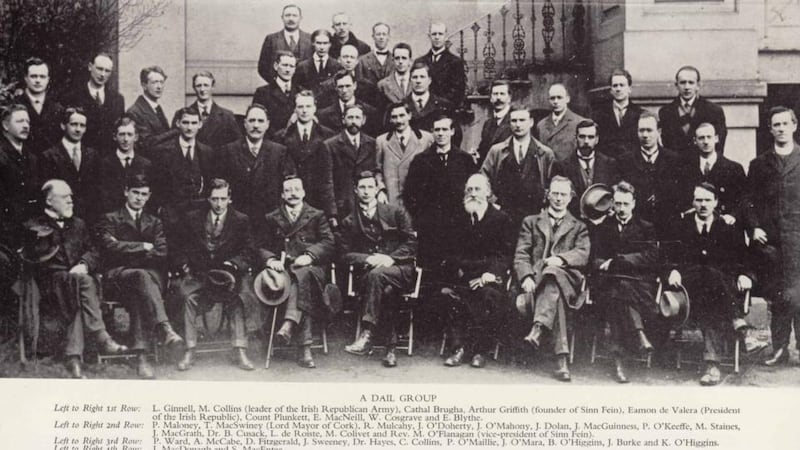James O’Mara did not fit the standard profile of republican activist. He was a successful businessman and millionaire whose summer holiday home was Cashel House in Connemara, now a hotel of the same name.
Yet O’Mara, my great-grandfather, played an important role in helping the fledgling State on to its feet by organising the government’s first bond-certificate drive in the United States from 1919 to 1921. Over $5.1 million (at least $68 million in today’s money) was raised in the campaign, and while political fundraising might have a grubby reputation these days it was essential then to keep a financially vulnerable administration together.
As historian Francis Carroll put it: “This was the money that financed the War [of Independence], indeed, made the war possible. Not only did these funds support the army, but just as important, they enabled the Dáil government to operate the offices of a working government.”


As an episode in the State’s founding history, however, it also has its murky side. Power struggles intruded on the high ideals behind the plan – O’Mara resigned his post over concerns about Eamon de Valera’s financial management –- and today questions are still being asked as to whether all the money went where it should have gone.
James O’Mara was born in 1873 in Limerick where his grandfather had set up a bacon company. He succeeded his Parnellite father as MP for Kilkenny South, and helped put a Bill through the House of Commons in 1903 that made St Patrick’s Day an official bank holiday in Ireland.
As progress on Home Rule stalled, however, O’Mara resigned his Westminster seat and in 1907 joined Arthur Griffith’s newly formed Sinn Féin. He became the party’s financial director and an election organiser and was himself returned in the 1918 elections to take a seat in the first Dáil.
Funding was one of the priorities of the revolutionary parliament, which first met in the Mansion House on the very day the War of Independence began. As Carroll wrote in his history of the loan drive , Money for Ireland , "no money, no government functions; no government functions, no credibility; no credibility and the whole struggle to obtain independence was in danger of collapse."
Sinn Féin looked for help to America, and the many Irish nationalists living there. O’Mara was named as one of three trustees of the new Dáil, and charged – along with de Valera – with setting up the bond certificate drive. They agreed that each subscriber would receive a certificate of indebtedness of the Irish Republic, which was non-interest bearing. The bonds would be sold on the back of de Valera’s tour of America.
There followed a gruelling coast to coast tour, for which O’Mara and de Valera had to dodge British intelligence and sidestep US law. De Valera used his diplomatic skills to circumvent the fact that the Irish government was not officially recognised by the US congress, while O’Mara came up with elaborate schemes to launder the money.
An early dispatch of $200,000 was sent through three different bank accounts, to remove all trace of its origins, and eventually drawn down by a New York priest who gave it to the Bishop of Killaloe, Michael Fogarty, then also a Dáil trustee.
Some 303,578 people bought certificates, the largest proportion buying amounts of $25 or less. In New York alone, about 100,000 people purchased about $1 million worth.
Back home it was hailed as a stunning success but there were tensions behind the scenes. O’Mara, who paid his own personal expenses in America, shelling out £10,000 in all, was critical of the running costs incurred by others. He also clashed with de Valera on policy. Disagreements over the establishing of a new Irish-American political lobby and the manner in which to run a planned second bond drive eventually led to O’Mara’s resignation.
It was a bitter divorce – it would be nearly 20 years before they'd speak to one another again – and the reasons behind it are still contentious. Some commentators believe de Valera wanted rid of O'Mara so he'd have full control over the finances in America. But, as Stephen Kelly points out in The Sinn Fein Millionaire: James O'Mara and the First American Bond-Certificate Drive, there were personality issues too.
“He was nine years older than de Valera and as a successful businessman, used to making his own decisions, O’Mara had come to view his younger colleague with more than a hint of disdain.”
O’Mara became further disillusioned with politics when the Civil War broke out. He acted as the State’s first ambassador to the US in 1922 and two years later won a Dáil seat as a Cumann na nGaedheal candidate. But in 1927 he left politics for good.
The story of the bonds didn’t end there, however. About $2.5 million of the deposits were sent to the Irish government in 1922 but de Valera held on to the remainder in the US, along with $600,000 which had been raised in the second bond drive without O’Mara.
The Free State government took legal action, and in 1927 a New York court ruled that the bondholders should be repaid, at a rate of 58c for each $1.
What happened next was probably one of the greatest strokes in Irish politics. De Valera contacted the bondholders directly asking them to sign over the bonds to him so he could set up the Irish Press . Many did, or had forms signed on their behalf by next of kin. When de Valera came to power in 1932 he pushed legislation through the Dáil saying bondholders would receive, not just the 58c, but an additional 67c from the Exchequer making it $1.25 in all.
De Valera used the cash windfall to buy shares, along with his son Vivion, in the Irish Press . "While the exact number of bonds converted has never been made public, the money de Valera received from the transfer was crucial as start-up capital," notes Mark O'Brien in his history of that newspaper , De Valera, Fianna Fáil and the Irish Press .
Adding intrigue to the affair was the fact de Valera kept his huge family shareholding in the Press secret until Noel Browne exposed it in the Dáil in the late 1950s.
In somewhat Machiavellian fashion, de Valera had appointed O'Mara's younger brother Stephen as a trustee of the US bond monies immediately after O'Mara's resignation, and the same sibling was later made a director of the Press . Perhaps to avoid family disharmony, James O'Mara kept his counsel in later years about de Valera's use – some would say misuse – of the loan funds.
O’Mara died in 1948, and his funeral drew little public attention. As his daughter Patricia Lavelle recalled in her biography of the Sinn Féiner: “There was no tricolour over his coffin, no bugles sounded over his grave. No guns were fired in salute but we paid silent tribute to him for all he had done and suffered that Ireland might be free.”











